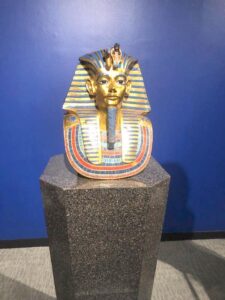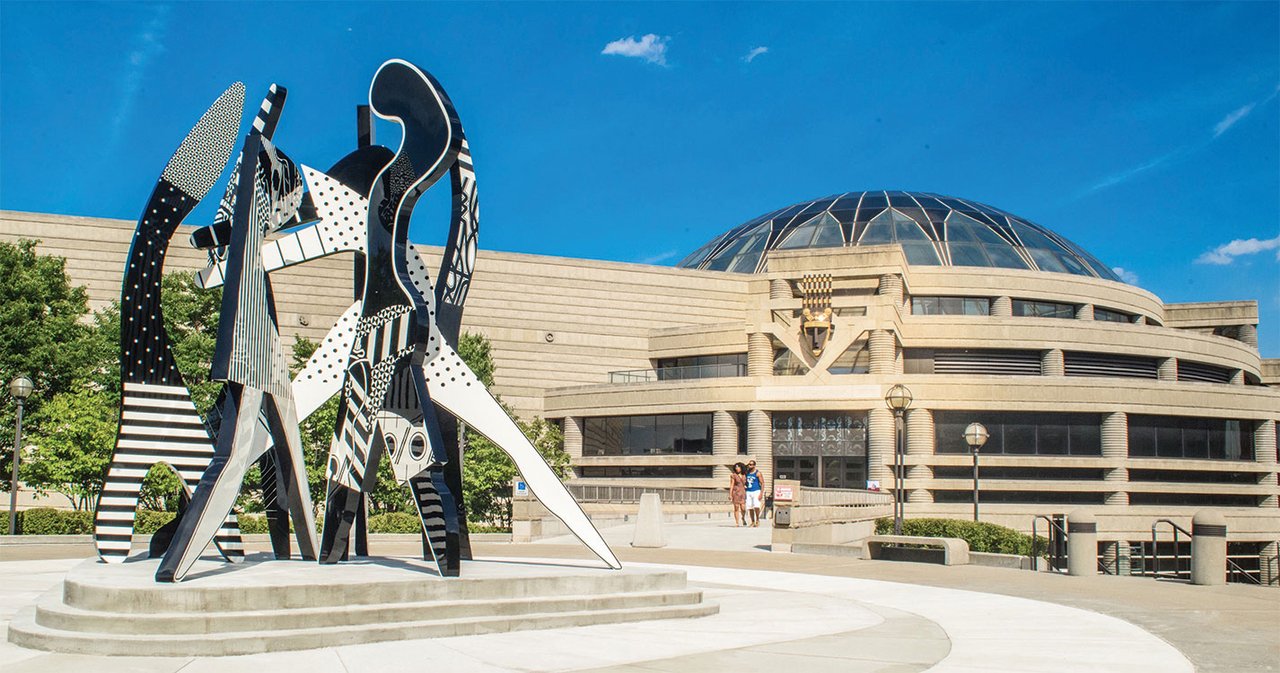The Charles H. Wright Museum of African American History provides learning opportunities, exhibitions, programs, and events based on collections and research that explore the diverse history and culture of African-Americans and their African origins.
Photo by Michelle and Chris Gerard
By Deborah M. Walker

Photo by Deborah Walker
DETROIT, MI — Who doesn’t love a spring field trip that inspires and educates? The good news is that one is available in person in nearby Detroit.
The Charles H. Wright Museum of African American History (www.thewright.org), located in Midtown Detroit, is hosting special programming during March that highlights Women’s History Month from an African American perspective. In addition to this special programming for March, the museum offers a comprehensive tour to learn more about the African American experience throughout history.
Women’s History Month
“History Speaks” is a collaborative effort involving middle and high school girls who gather to examine and discuss the lives and work of powerful Black women in history.
Another program, “Six Triple Eight,” includes a film screening and discussion about this historical and yet seldom recognized effort of the 8666th all Black battalion of the Women’s Army Corps (WACs) who were sent to England and France to clear a huge backlog of mail for warriors serving in the European Theater. Confronted with both racism and sexism, the 8666 Battalion (Eight Triple Six) film highlights their experiences as they served with honor and distinction to accomplish their mission.
Another program is called “Glimpses from And Still We Rise: Women First” focuses on four extraordinary women known for their strength of character in meeting challenges. As part of this focus on Women’s History Month, the museum is also collaborating with the College for Creative Studies in an exhibit that explores how designers and artists learn from the wisdom of trees.
Check their online calendar for specific dates throughout March for these events at www.thewright.org and select “programs” from the menu.
About the Wright Museum
Dr. Charles H. Wright, a physician who had a distinguished medical career in the Detroit area, was the founder of the museum that now bears his name. After visiting museums in other parts of the world, he was determined to build a museum in his beloved Detroit to help others understand the unique heritage and resilient culture of African Americans. From its humble beginnings in Dr. Wright’s basement, the museum is now a beautiful multi-level museum that contains more than 35,000 artifacts of historical and cultural interest spread across its 125,000 square feet. It is located in the thriving Midtown Detroit area, near the Detroit Institute of Arts and the Michigan Science Center.
“The Charles H. Wright Museum considers itself a ‘first voice’ institution, and it is our intent to make sure that those first voices are shared with individuals interested in the African American journey in understanding what has happened in today’s society,” said Edward Foxworth, Director of External Affairs at the Charles H. Wright Museum.
Foxworth said the museum considers Black history an integral part of American history and that history did not start during slavery. Although many people believe that African American history began when Africans were captured and brought to America, Dr. Wright set out to change the narrative and teach people the true history of the African American people, explained Foxworth.
Most Popular Exhibits
The Charles H. Wright Museum of African American history has a number of exhibits that would interest everyone who wants to know and understand more about African American history, placed within the context of social, geographic, historical, and creative origins.
“And Still We Rise” is a long-running exhibit at the Museum. Through the strategic use of 20 galleries, the exhibit takes African American history back to 1500 BC and then moves the viewer up to current events.
Part of this exhibit offers a powerful glimpse and a profoundly sad look into a dark moment in African American history. Walking into the display, there are images of enslaved people in different points of their captivity.
Foxworth explained the history of the “And Still We Rise Display,” by saying, “Slave traders traveled to Africa to enslave the people for their labor and we show that they had traders and slave forts and they were put on boats from three to six months traveling to different locations.”
People often say that the saddest part of the tour is the slave ship display. Even though it is a replica of a slave ship, the enslaved people’s brutality and suffering are still present in the atmosphere. Sad feelings are common but knowing that it happened to African Americans at some point in our history is both disheartening and yet essential to preserving African American history.
King Tutankhamun Exhibit – Foxworth said one of its current traveling exhibits, King Tutankhamun: “Wonderful Things From the Pharaoh’s Tomb,” is currently the most popular display at the museum.
This traveling exhibit portrays the artifacts and hieroglyphics found in King Tut’s tomb in Egypt. “It was just an overwhelming number of audiences coming through to be able to see 130 replica artifacts of the boy king who was only 19 years old. The King Tutankhamun display is in two rooms because there were so many artifacts to see.
Tuskegee Airmen National Museum – A long-term display at the museum is the Tuskegee Airmen National Museum. The display has been at the Wright museum for eighteen months and has another eight years to go. “They are a museum themselves, but they were located in suburban Detroit. About eighteen months ago [they] located their national museum inside the Charles H. Wright Museum. So they are a museum inside a museum,” noted Foxworth. “So people can come in and learn about these brave men and who they were.”
According to the National Park Service (nps.gov), the Tuskegee Airmen were “the first African American fighter pilots and crew in the US Army Air Corps… These men were the crème of the crop, many of whom already had bachelor’s and master’s degrees when they first began flight training in July of 1941.”
Other Exhibits and Works of Art:
Detroit Performs! – is a photomontage that celebrates Detroit’s performing artists in music, dance, and theater.
Ring of Genealogy – is a 37-foot work of art by Hubert Massey, located in the Ford Freedom Rotunda, visually connects the art to hundreds of bronze nameplates that bear the names of iconic African Americans.
Stories in Stained Glass – this moving exhibit showcases the stained glass works of artist Samuel A. Hodge. It celebrates both the artistry and resiliency of African Americans.
Be Educated! Be Entertained! and Be Inspired! – are other permanent exhibits that focus on positive and empowering messages and messengers.
Museum Collections
The Wright Museum also includes historical collections, such as the Blanche Coggin Underground Railroad Collection, the Harriet Tubman Museum Collection, and the Sheffield Museum (a repository of documents regarding the labor movement in Detroit).
Visiting the museum
The museum welcomes people of all ages who want to learn more about African American history as well as many research scholars.
For more information about the Charles H. Wright Museum’s hours, admission prices and discounts (including its special membership drive held during March), parking, timed entries, the gift shop, and COVID-19 protocols, visit the museum online at www.thewright.org or give them a call at 313-494-5800. Tickets must be reserved in advance and are limited to 25 visitors every 20 minutes. They are located at 315 E. Warren Ave. Detroit, MI 48201.
Diana Popp contributed to this story.




